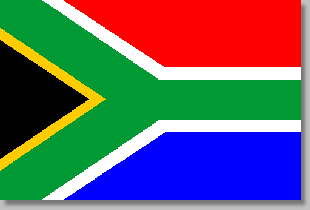 The
United States Government contributed 14,000 trees towards South Africa’s
National Arbor Week that began on September 1, 2003.
The
United States Government contributed 14,000 trees towards South Africa’s
National Arbor Week that began on September 1, 2003. 

USAID Supports National Arbor Week in South Africa
 The
United States Government contributed 14,000 trees towards South Africa’s
National Arbor Week that began on September 1, 2003.
The
United States Government contributed 14,000 trees towards South Africa’s
National Arbor Week that began on September 1, 2003.
United States Agency for International Development (USAID) Deputy Director, Eilene Oldwine, joined South African officials and 2000 community residents of Potchefstroom’s neglected suburbs to plant the first installment of 1000 trees along the barren streets on September 2. The section of North West province is home to a quarter of a million South Africans. The stark absence of trees and related trademarks of a healthy environment resulted from apartheid practices that excluded basic service delivery in black-inhabited communities.
Department of Water Affairs and Forestry Minister, Ronnie Kasrils, describes the country’s week-long focus on trees as much more than a friendly greening campaign. South Africa is dedicated to managing its rich environmental resources responsibly and effectively for future generations to enjoy—locals and tourists. “Trees are a national resource requiring protection,” according to Kasrils, so the Arbor Week theme, “Trees are our Heritage” aims to spread messages about the social, economic and environmental importance of trees in a society.
Oldwine said USAID is helping provide environmental management training to local governments throughout South Africa as a tool for promoting economic advancement and alleviating poverty.
She said that the sizeable audience who attended Potchefstroom’s trees launch demonstrated that “South Africans are eager participants and architects in building a more equitable and functional country for all its people.”
Trees are important socially as recreational areas for families and friends. Trees are a feasible investment economically because they help to promote jobs in the housing, furniture and food-producing industries. Trees are essential in environmental improvement because trees produce oxygen and improve air quality by absorbing unhealthy carbons emitted by industrial waste.
The specific trees from the U.S. government were selected in conjunction with Food and Trees for Africa, South Africa’s national organization that develops, manages and promotes sustainable natural resource management efforts. Focus is given to promoting food security, improved environments and skills development.
Oldwine presented a R250,000 check to Pothefstroom’s City Council and said, “South Africans are ensuring that your heirs—sons and daughters—have a positive heritage in every way, including their land. We applaud your commitment to respect and protect these trees that are so useful in serving your environment and your people.”
Until 1994, Oldwine said, “USAID could and would not work with the government of this country, but channeled our support through nongovernmental organizations.” Her agency is now involved with all levels of government as well as NGOs—working with South Africans for South Africans in six key sectors: democracy and governance, education, health and HIV/AIDS, developing economic and employment capacity, and housing/urban improvement.”
![]()